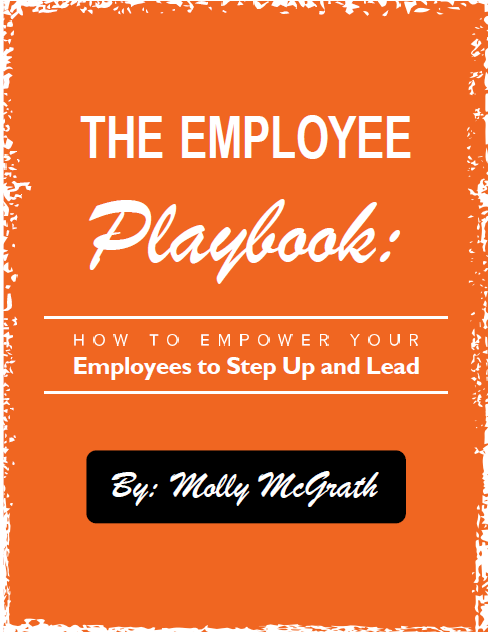Let me share a well-known secret: Bosses don’t have the answers for everything! If you are a boss, you might be thinking, of course I don’t! That’s why I keep asking for help!
And if you are an employee, you might be thinking, I know that! That’s why I keep trying to help my boss do this a better way!
That’s why I call it a well-known secret. We all, bosses and team members alike, know that none of us have all the answers, but we still interact on a daily basis as if we do.
 I noticed this over the past week or so in my business. Some areas that needed improvement in our workflow process really seemed to be coming to a head. These were things we had been tolerating or limping along with and hadn’t stopped to address. My key employee emailed me about the first two issues, and I responded right away with suggestions on how we could fix them. Neither suggestion had any type of follow-up action from me or any plan to actually implement it. Two days later, as the week continued its trend of problems erupting that we needed to address in our process, I did that “boss thing” we sometimes do, where our frustration boils over and we type out a long, rambling email to our team listing all the things we need to fix and improve. Now, none of this was directed AT my key employee. They were all process things that truthfully she has been mentioning to me for a while but I’d been too busy to address.
I noticed this over the past week or so in my business. Some areas that needed improvement in our workflow process really seemed to be coming to a head. These were things we had been tolerating or limping along with and hadn’t stopped to address. My key employee emailed me about the first two issues, and I responded right away with suggestions on how we could fix them. Neither suggestion had any type of follow-up action from me or any plan to actually implement it. Two days later, as the week continued its trend of problems erupting that we needed to address in our process, I did that “boss thing” we sometimes do, where our frustration boils over and we type out a long, rambling email to our team listing all the things we need to fix and improve. Now, none of this was directed AT my key employee. They were all process things that truthfully she has been mentioning to me for a while but I’d been too busy to address.
But I realized something as I was typing bullet point number 23 at midnight: Sending this to her was not just pointless, it would also dump a ton of stress on her. It wasn’t a well-thought-out email. I needed her input on many of the process issues and how we could fix them. My email was a complete emotional dumping of frustration that would in turn leave my employee wondering who I was upset at, and whether she was supposed to take action on any of these 23 things. It would put her in a position of having to respond to all of them with more information I need to actually make a process change, and it would probably give her a sense of unease that I’m up at midnight firing off frustrated emails. Just like we are sensitive to our employees’ moods and what they might mean, our employees are sensitive to ours. Are we burning out? Are we going to shut the business down? What’s going on? And how does it affect their job?
I realized in that moment that we bosses do this a lot. When an employee reports a client complaint, a process issue or a frustration, we feel the need to IMMEDIATELY respond with a way to fix it. But in doing so, with no plan for follow-up, implementation or employee feedback, we end up looking flaky and inconsistent to our team. How many times have you had to send that “You know, I thought more about this and….” email in the morning? I know I have.
And like a lot of companies with Quick Start bosses and high follow-through staff, we throw out suggestions to address complex problems without really thinking them through, and then we don’t follow up. So we show up like a Tasmanian devil flinging suggestions and ideas, then we disappear on them.
Interestingly, we talk a lot in our book “Don’t Be a Yes Chick” about the importance of employees not always giving an answer off the top of their head. We urge you to learn to say to your boss, “I need to look into that and think about it. Let’s revisit it tomorrow morning.” That way you can fully think through the issue and have time to look up the information needed to have a real answer. You will avoid looking wishy-washy or uninformed to your boss.
So why, as bosses, aren’t we doing the same thing? We aren’t helping our team by throwing out immediate answers to complex problems. We are probably stressing them out and possibly annoying them. We definitely aren’t solving problems.
So let’s get comfortable with acknowledging, “I hear the problem and how it’s affecting you.” And let’s have a process to address it: “We should add that to our Wednesday meeting agenda. In the meantime, I’ll look into how many clients are affected by this issue, and can you bring to the meeting your timeline of when this is happening?” That lets you have prepared, though-out discussion, get relevant feedback from everyone and together make a decision with an action plan. It doesn’t take any longer, it’s just more intentional.
If you aren’t sure how to lead a conversation like this about improving (or creating) processes in your firm, consider our VIP Strategy Day. You might be a fit if you are in the Building phase of your business with little capital and resources at your immediate disposal, and you don’t know how or what to do. Or you may be evolving by default vs. design and seeking a written, specific, measurable, attainable action plan – for every area of your business. Or maybe you’re just ready to Grow Your Business without the snowballing overhead, time, budget and staff.

